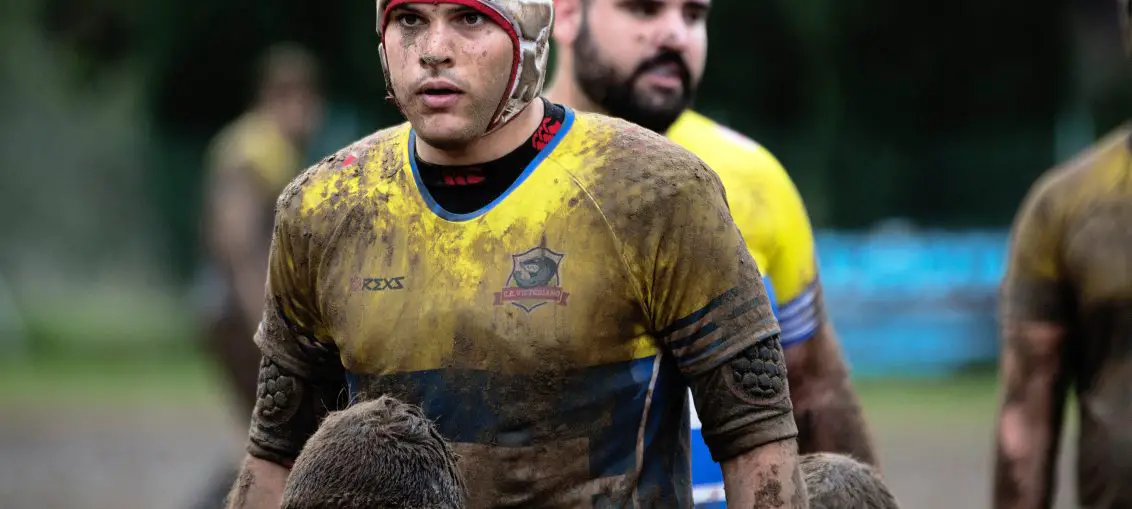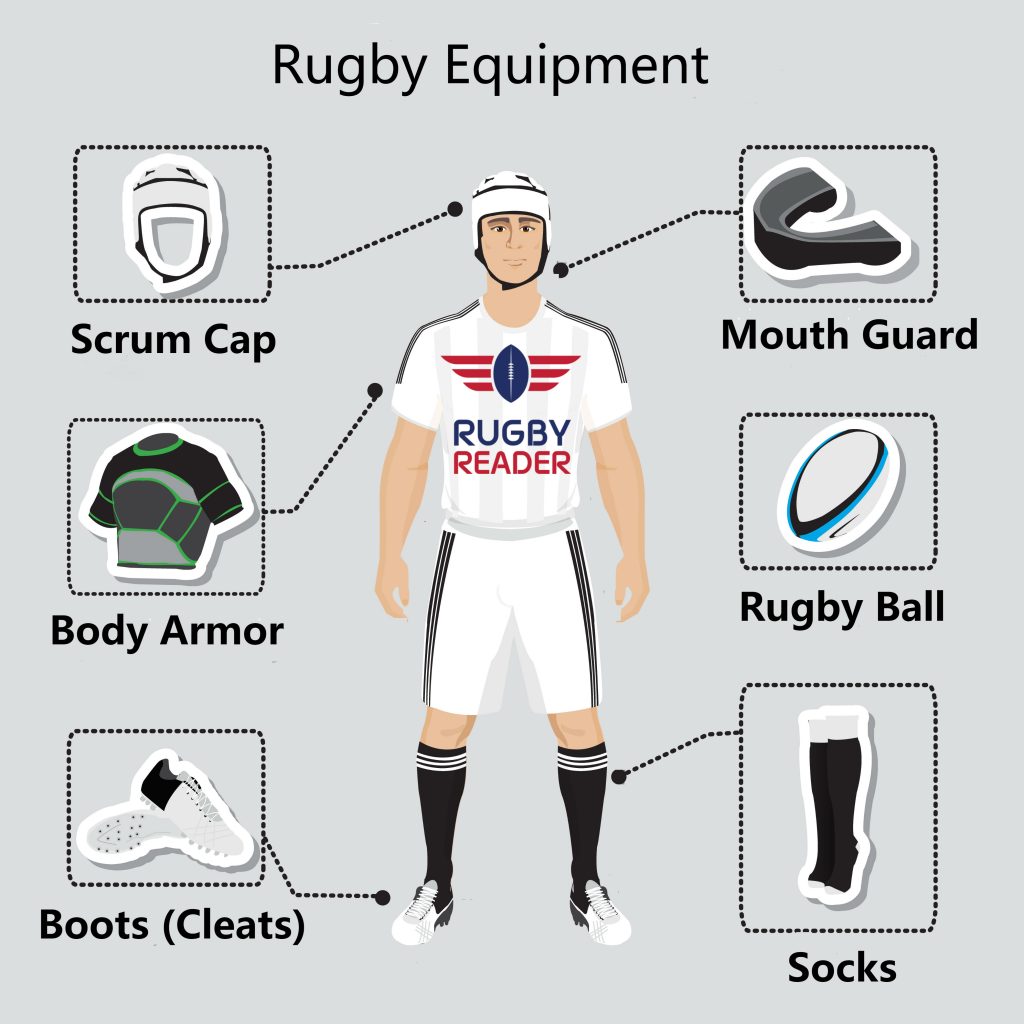
Basic gear all players need
Rugby players need equipment unique to the sport to keep themselves safe and performing to their full ability. Rugby is a full contact sport and injuries can occur if players are not dressed properly. Players also need equipment that is made for their level of development.
So, what is the basic rugby equipment players need? Let’s look at some important items that should be in every player’s locker.

Rugby Ball
Rugby balls come in four sizes and are built for specific age groups. Young players need to compete with age specific balls to allow them to develop and become better rugby players. If a young player uses an oversized ball meant for old players, it will only slow down their improvement.
The four sizes of rugby balls are as follows:
- Size 3 (Mini) Under 7, U8, and U9
- Size 4 (Junior) Under 10, U11, U12, U13, and U14
- Size 4.5 (Women) Under 15 and above to senior rugby
- Size 5 (Men) Under 15 and above to senior rugby
In the market for a new ball? Check out our Rugby Ball Buyer’s Guide.
Balls come in a variety of styles including training, match, and recreational balls. Players can also use all-weather rugby balls.

Law 2 of the World Rugby Laws details the shape, size, and air pressure requirements of a rugby ball.
Rugby Cleats
Rugby cleats, also known as rugby boots, have come a long way in the last decade. The amount of technology that goes into the top of the line cleats is incredible. Traditionally, there was a difference between rugby and football cleats. Rugby cleats typically offered more ankle support and strong toe areas. However, due to players – especially backs – preferring football cleats, major brands have changed their designs.
Modern rugby cleats are made lighter, especially for backs and kickers. Meanwhile, cleats designed for forwards are sturdier allowing them to get optimal support for scrums. Cleats for backs have six studs, while forwards have eight studs on their cleats.
Cleats are either soft ground or firm ground cleats. Players can wear soft ground cleats to play on soft, natural grass. Firm ground cleats are for natural firm/dry pitches or artificial grass/AstroTurf.
Rugby Shorts
Rugby shorts are different than football shorts. In fact, they are very different than the shorts players find in other sports. Rugby shorts are short allowing players to run without being hindered by the length of the material. They are also lightweight but made with resilient materials to prevent being ripped or torn.
Long shorts make it easier for opposing players to grab and tug at them. A player’s equipment must be made to reduce the opportunity for players to be pulled down by their clothing. Short shorts and slim shirts prevent wind resistance to players as they run down the pitch.
Rugby Jersey
Rugby jerseys have evolved over the last two decades. They were previously quite baggy and resembled a polo style shirt complete with collar. Modern rugby jerseys are slim and form fitting. Shirts are water resistant to prevent the build-up of moisture making them heavy. Many of the top brands design jerseys that wick away moisture.
One of the reasons jerseys are slim is to prevent opposing players from grabbing and yanking on the shirt. In addition, slim jerseys allow for better movement when passing the ball and running.
Rugby Scrum Cap
More and more professional rugby players are donning scrum caps these days to protect their heads. A rise in head trauma to football players, rugby players, and American football players, has influenced more athletes to seek protection of their brain.
A scrum cap doesn’t just protect a player’s head and lower the chances of a concussion. They are also worn stop ear injuries. Many rugby players suffer cauliflower ears, which is the clotting of blood in the ear. The clotting prevents the ear from getting blood and a rigid calloused portion of the ear forms. A scrum cap can cover the ear to help prevent cauliflower ears from forming. Caps can also prevent painful irritation from occurring once a cauliflower ear starts.
Mouth Guard
Rugby is a physical sport and players can easily have their teeth knocked out from a hard tackle. Players wear a mouth guard to protect their teeth. A mouth guard also prevents a player from biting their tongue when suffering a strong tackle from an opponent. According to the American Dental Association, mouth guard use has been shown to reduce the risk of sport-related dental injuries.
Kicking Tee
Kicking is a major factor in all levels of rugby today. The kicking game can be the difference between winning and losing a match. Rugby kicking tees come in a variety of styles and are made to perform based on a player’s kicking style.
There are tees that are low lying and close to the ground while other tees are much taller allowing players to get under the ball. The importance of converting tries and penalties is massive in modern rugby and getting the right kicking tee for a player’s style can take some time. There are also other training tools players can add to improve their kicking including a kicking mat.
RugbyReader.com is reader-supported. If you buy via the links on our site, we may earn an affiliate commission at no cost to you

